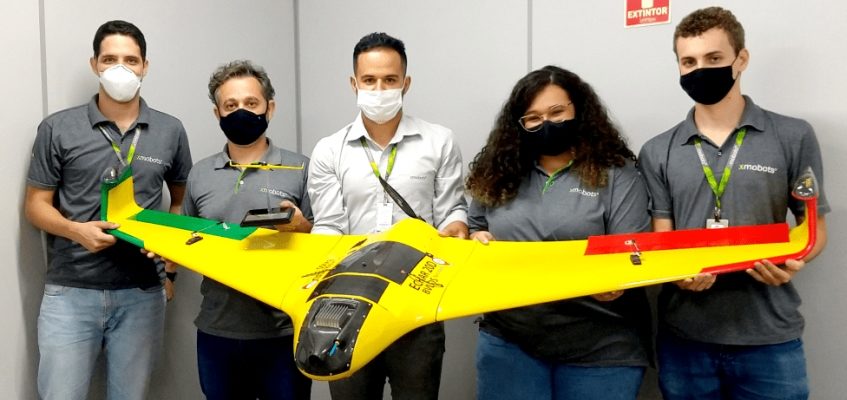XMobots, the number one drone company in Brazil and in Latin America, conquered an important milestone in the UAV market: the company received the first authorization of project from ANAC (Agência Nacional de Aviação Civil – National Agency of Civil Aviation) for BVLOS (Beyond Visual Line of Sight) flights up to 30 kilometers range and/ or above 400ft AGL (Above Ground Level). And the RPA Echar 20D was the detainer of the authorization. .

XMobots had already been the first company in Brazil to get authorization of project from ANAC for flights above 400ft, issued for the RPA Arator 5B in 2018. Now with this new homologation, the company keeps on paving its pioneering trajectory in the UAV market, developing and applying national technologies to the navigation systems, control, guidance, communications, softwares of flight interface (cockpit) and to other embedded systems, allowing RPAs like ECHAR 20D to be fully explored. “This project approval represents a milestone since it allows long range missions attending security standards and applicable requirements of airworthiness to BVLOS operations that surpasses boundaries of the 5-kilometers-BVLOS ones, extending the range to 30km”, says Décio Gomes, Certification Coordinator at XMobots.

According to Giovani Amianti, XMobots´ CEO, to get the authorization of project for BVLOS flights up to 30 kilometers range and/or above 400ft is an accomplished stage in the company´s strategic plan, presenting the expertise and the consolidation of XMobots´ R&D team in the development of high performance drones that get more authomatic each time. “XMobots have been investing heavily in the enhancement of its Engineering. Long range drone operations are key elements in the future plans of the company and now, getting this project approval, XMobots makes an important step in this direction”, afirms Giovani.

About the process of authorization of project
In order to have the authorization issued, it was necessary to have analysis that included reviews of project, processes, guides and issue of security technical reports, as well as the performance of several development essays, to demonstrate and to execute means of compliance to the certification base requirements, in order to reach a satisfactory security level, following the acceptability criteria established by ANAC.

“The effort to reach this stage is notable and worthy to be highlighted with congratulations. It´s interesting to have the 30 kilometers distance from the remote operator. Considering all current security specifications, we will find very few players in the world. And this process prepares the company to get the international scenery, prepares Brazil to publicize, to incentivate the national industry and ourselves to include these topics that are bilateral to the acceptance of Brazilian aircrafts. And the sector itself develops integrally”, says Roberto Honorato, Superintendent of Airworthiness at ANAC.
“We saw the growth and maturation of XMobots, the launch of new products, like Dractor 25A, and the evolution of the company´s engineering. When I participated in the authorization of project of Arator, XMobots had about 40 employees occupying a 1.000m² area. Today, there are 170 employees in an installation of 6.000m². And this evolution goes beyond: reading and analyzing reports from the process of the Echar, we noticed the maturity of the engineering and the certification department in the requirements discussion as well as in the way to comply with them. Congratulations to the company! XMobots is pioneering ways, not only in the UAV market, but also in Engineering and Certification”, highlighted Rui Carlos Josino Alexandre, Specialist in civil aviation regulation at CDNT (Coordenadoria de Drones e Novas Tecnologias – Coordination of Drones and New Technologies).


The authorization issued allows that serial numbers, in conformity with the authorized project, receive a CAER (Certificado de Aeronavegabilidade Especial de RPA – Certificate of Special Airworthiness), indicating the capacity of the aircraft to operate with security in up-to-6.000ft AMSL (Above Mean Sea Level) and a 30-kilometers-range flights.



